25 Under-The-Radar Beach Towns In The U.S. Worth Discovering
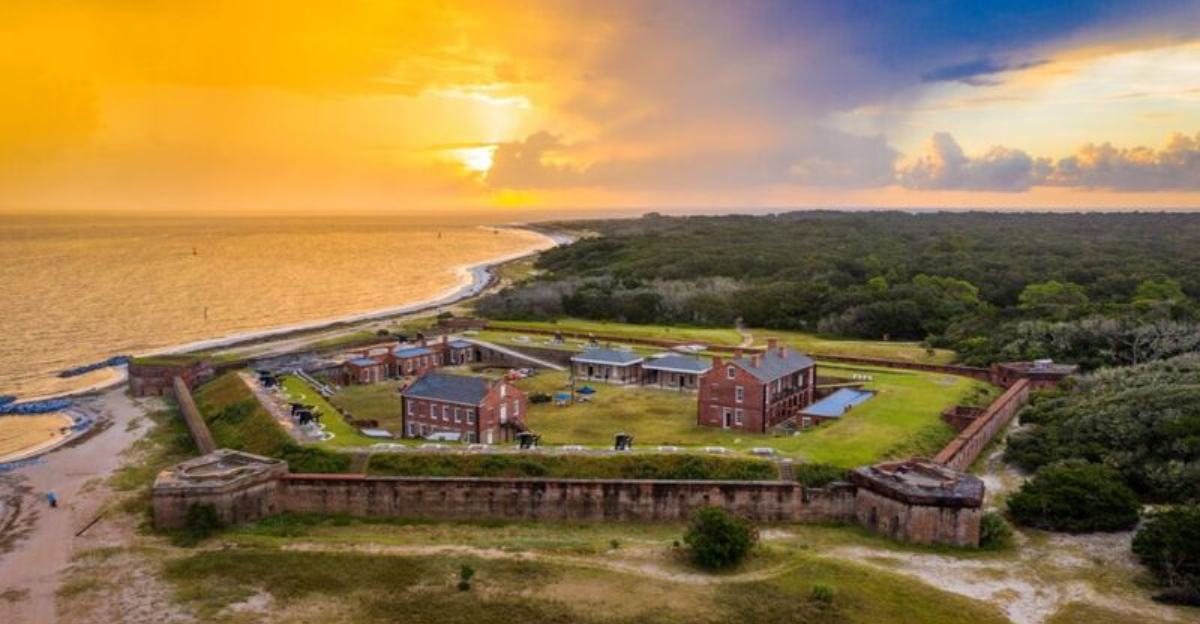
Tired of fighting for space on packed beaches or paying premium prices for a sliver of sand? There’s a better way to soak up the sun. All along America’s coasts, you’ll find low-key beach towns where time slows down, the locals wave hello, and the sound of crashing waves isn’t drowned out by party crowds.
These underrated coastal escapes offer more than just beautiful views—they come with fresh seafood joints, cozy boardwalks, and the kind of laid-back charm that reminds you why beach vacations were magical in the first place.
Ever heard of places like Port Aransas, Folly Beach, or Cape Charles? If not, you’re in for a treat. Let’s explore the seaside spots that deliver serenity and sunshine, without the chaos.
1. Port Aransas, Texas
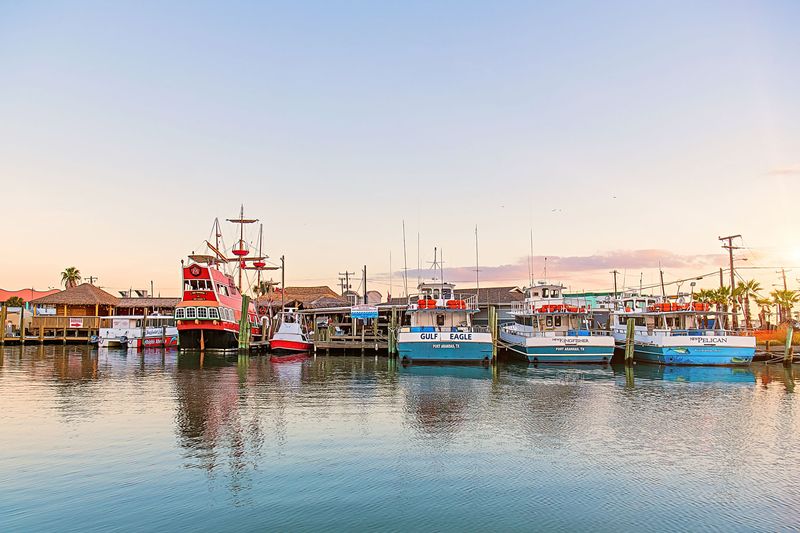
Locals call it “Port A” – this Gulf Coast treasure sits on Mustang Island with 18 miles of golden beaches. The laid-back atmosphere makes it perfect for families seeking a genuine coastal experience.
Fishing enthusiasts flock here for some of the best deep-sea adventures in Texas. You can catch kingfish, marlin, or red snapper depending on the season.
Unlike Galveston or South Padre Island, Port Aransas maintains its small-town charm while offering plenty of beachfront rentals, fresh seafood restaurants, and colorful souvenir shops without the massive tourist crowds.
2. Cape May Point, New Jersey
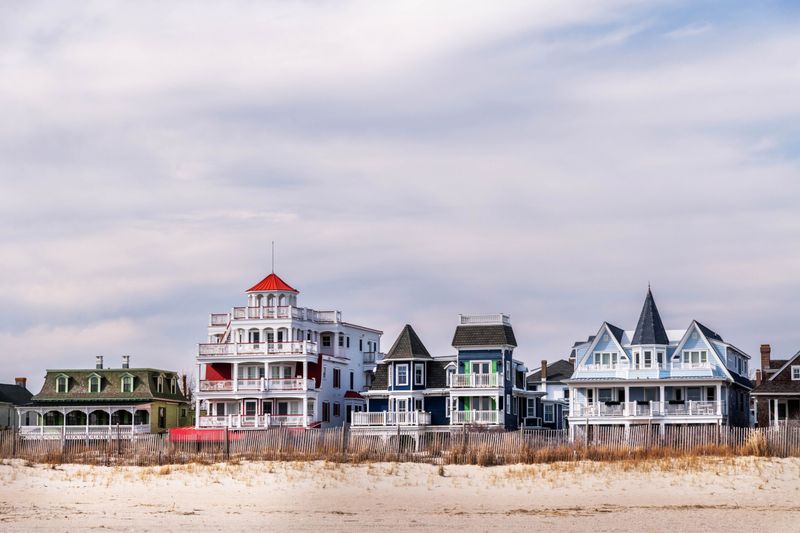
Hidden at the southernmost tip of New Jersey sits Cape May Point, a peaceful alternative to the state’s busier shore destinations. Victorian houses painted in pastel colors create a picturesque backdrop to the pristine beaches.
Bird watchers consider this spot heaven during migration seasons when the Cape May Bird Observatory documents hundreds of species passing through. The iconic lighthouse standing since 1859 offers panoramic views for those willing to climb its 199 steps.
Sunset Beach reveals its special treasure – unique quartz pebbles known as “Cape May diamonds” that wash ashore, making beachcombing an exciting treasure hunt.
3. Folly Beach, South Carolina
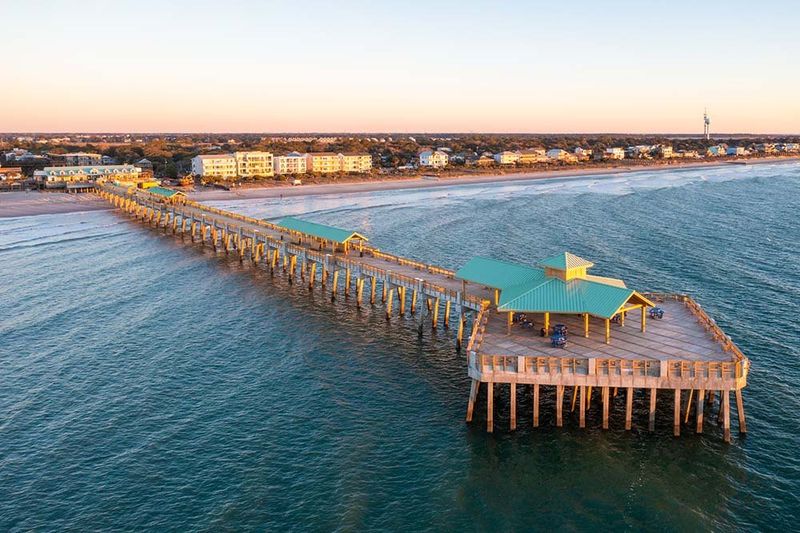
Just 20 minutes from Charleston’s historic district, Folly Beach feels worlds away from city life. This quirky beach town proudly embraces its nickname “Edge of America” with a carefree, bohemian spirit that attracts surfers and free spirits.
Morris Island Lighthouse stands offshore, creating picture-perfect sunrise views. The town’s main drag, Center Street, features colorful surf shops, local seafood joints, and beach bars with live music – all without a single chain restaurant in sight.
Loggerhead turtles nest on these shores, and the Folly Beach Fishing Pier stretches over 1,000 feet into the Atlantic, giving anglers prime access to king mackerel and sharks.
4. Cayucos, California
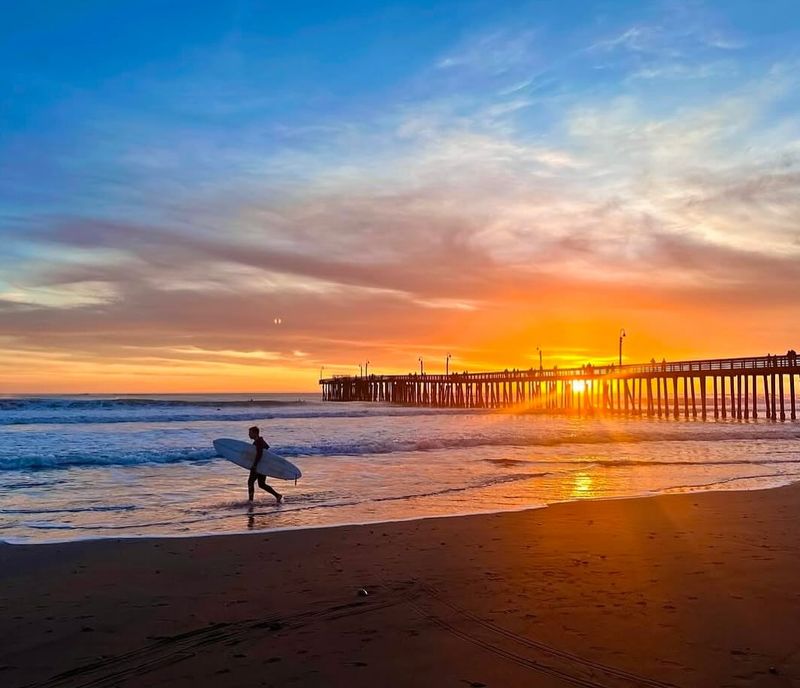
Halfway between San Francisco and Los Angeles lies Cayucos, a sleepy California beach town that seems frozen in time. The historic wooden pier dates back to 1872 and remains the heart of this community where surfers catch waves while dolphins play offshore.
Brown butter cookies from the famous local bakery have put this tiny town on culinary maps. Every Fourth of July, thousands gather for the quirky Cayucos parade where anything with wheels (from shopping carts to bathtubs) becomes a float.
Unlike neighboring Morro Bay or Pismo Beach, Cayucos maintains its undiscovered feel with antique shops, tidy beaches, and tide pools teeming with starfish and sea anemones.
5. Gulf Shores, Alabama
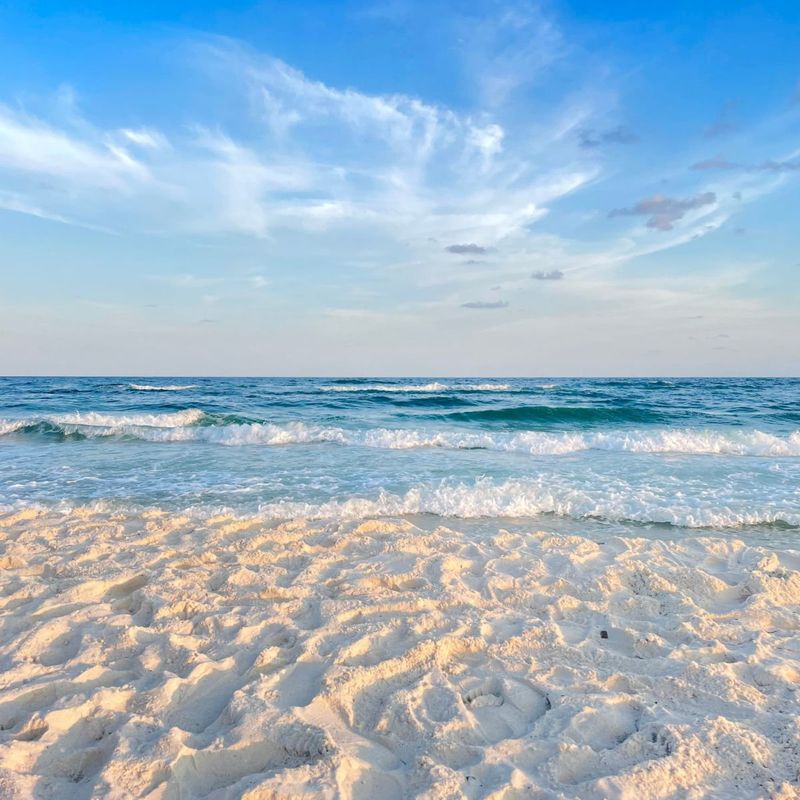
White sand so fine it squeaks beneath your feet welcomes visitors to Gulf Shores, Alabama’s hidden coastal paradise. Though gaining popularity, this Gulf of Mexico gem still flies under the radar compared to Florida’s packed beaches just a short drive away.
Fresh Gulf shrimp served straight from boat to restaurant makes dining here a seafood lover’s dream. The 7,000-acre Gulf State Park provides an unexpected nature retreat with hiking trails through coastal forests and wetlands where alligators sun themselves.
Annual events like the National Shrimp Festival bring the community together, but visit during off-season months and you might have miles of pristine shoreline nearly to yourself.
6. Bandon, Oregon Coast
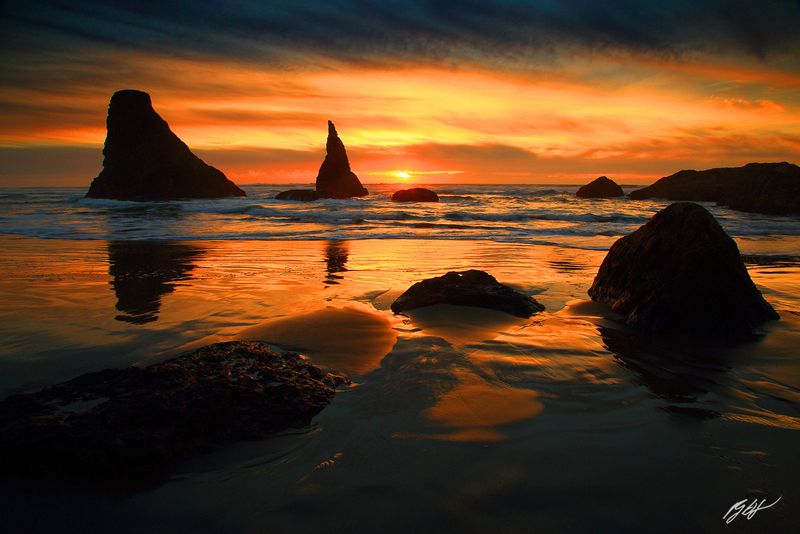
Dramatic sea stacks rise from the misty Pacific along Bandon’s windswept shores, creating one of America’s most photographed coastlines. Unlike busier Oregon destinations, this small fishing town maintains an authentic working harbor vibe.
Cranberry bogs surround the town, supplying berries for local jams and festivals each fall. The Bandon Dunes Golf Resort draws golf enthusiasts from around the world to play links-style courses set against breathtaking ocean backdrops.
Face Rock State Scenic Viewpoint reveals fascinating rock formations with Native American legends attached to them. During low tide, the beach becomes a natural gallery of temporary artwork as locals and visitors create elaborate labyrinths and sculptures from driftwood and stones.
7. Rockport, Massachusetts
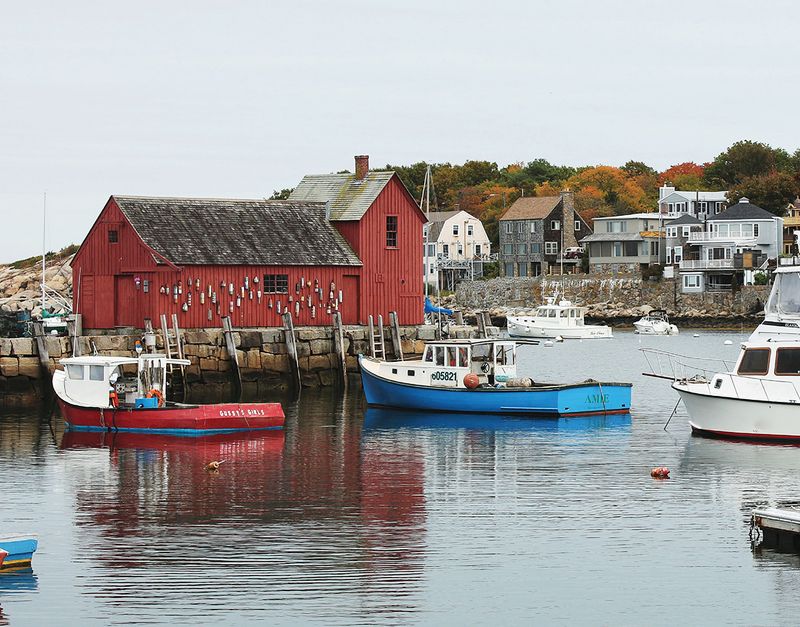
Motif No. 1, a bright red fishing shack perched on Bradley Wharf, has become the most painted building in America and symbolizes this authentic New England fishing village. Artists have flocked to Rockport since the early 1900s, creating a thriving gallery scene along Bearskin Neck’s pedestrian thoroughfare.
Front Beach sits steps from downtown, offering crystal clear water and views of the harbor’s colorful fishing boats. Though just 40 miles from Boston, Rockport feels worlds apart with its no-alcohol history (only recently changed) and preservation of traditional maritime industries.
Halibut Point State Park provides granite quarry swimming holes and panoramic ocean views stretching to New Hampshire and Maine on clear days.
8. Long Beach, Washington

Home to the world’s longest continuous beach (28 miles), this Pacific Northwest town offers dramatic shorelines where you can drive directly on the sand. The quirky atmosphere embraces oddities like Jake the Alligator Man at Marsh’s Free Museum and the World Kite Museum showcasing flying wonders from around the globe.
Wild cranberry bogs produce berries for the annual Cranberrian Fair each October. History buffs appreciate the Lewis and Clark interpretive center at Cape Disappointment, where the famous expedition first viewed the Pacific Ocean.
Razor clamming draws visitors during season, with everyone from children to grandparents digging at low tide. Unlike Oregon’s tourist-heavy beaches, Long Beach maintains its working-class roots while offering miles of uncrowded shoreline for contemplative walks.
9. Pass Christian, Mississippi

Hurricane Katrina nearly wiped this Gulf Coast town off the map, but Pass Christian has rebuilt while maintaining its sleepy Southern charm. Historic mansions line Scenic Drive, showcasing the town’s legacy as a vacation spot for 19th-century New Orleans elite.
The harbor hosts Mississippi’s second-largest oyster fleet, ensuring seafood doesn’t get fresher than what’s served in local restaurants. White sand beaches stretch for miles with shallow, warm Gulf waters perfect for families with small children.
Cat Island offshore creates a natural barrier, making Pass Christian’s waters calmer than neighboring beaches. Despite its beauty, this resilient community remains overlooked by tourists heading to Florida or Louisiana, giving visitors an authentic slice of Mississippi coastal life.
10. Tybee Island, Georgia

Just 20 minutes from Savannah’s historic squares, Tybee Island feels like stepping back to a simpler time. The 1736 lighthouse (Georgia’s oldest and tallest) stands sentinel over wide beaches where dolphins regularly play close to shore.
Seafood shacks serve fresh-caught blue crabs and wild Georgia shrimp. Bike-friendly streets lined with colorful cottages make cars almost unnecessary once you arrive on this 3-mile-long barrier island.
Unlike developed Hilton Head to the north, Tybee maintains its small-town character with strict building height limits and preservation of historic structures. The North Beach area attracts birdwatchers to its salt marshes, while South Beach draws sunbathers and families to its more developed stretch with restaurants and shops.
11. Ocean Springs, Mississippi

Art flows through the veins of Ocean Springs, a bayside community that’s home to the legacy of famed painter Walter Anderson. The downtown district features over 200 independent shops, galleries, and restaurants housed in historic buildings draped with Spanish moss.
Front Beach offers calm waters perfect for paddleboarding through coastal marshes. The town hosts festivals nearly monthly, including the renowned Peter Anderson Arts & Crafts Festival drawing over 150,000 visitors each November.
Unlike commercial Biloxi next door with its casinos, Ocean Springs maintains its artistic soul and connection to nature through Davis Bayou and the Gulf Islands National Seashore. Shearwater Pottery, founded in 1928, continues creating distinctive ceramics using the same techniques as when the Anderson family started it.
12. Carpinteria, California
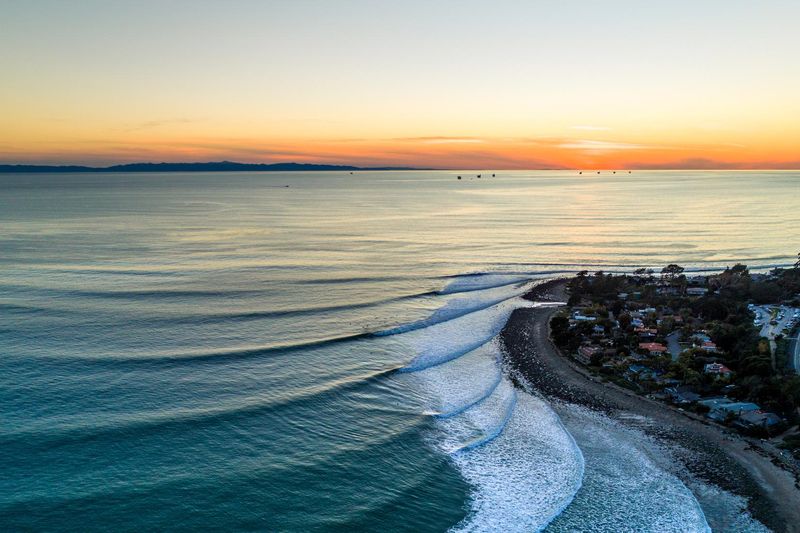
“Carp” to locals, this laid-back community boasts what’s called “the world’s safest beach” due to its gentle slope and protective reef. The name comes from the Chumash Indians who built canoes here, and that woodworking heritage continues in surfboard shaping shops around town.
Avocado and lemon orchards surround this agricultural beach town, celebrated during the annual California Avocado Festival. Rincon Point, nicknamed “Queen of the Coast,” offers legendary surfing breaks drawing wave riders from around the world.
Harbor seals birth their pups on the protected shoreline at Carpinteria Bluff Nature Preserve each winter, creating a rare wildlife viewing opportunity. Despite sitting just 12 miles from Santa Barbara, Carpinteria maintains its unpretentious character and considerably lower prices.
13. Montauk, New York
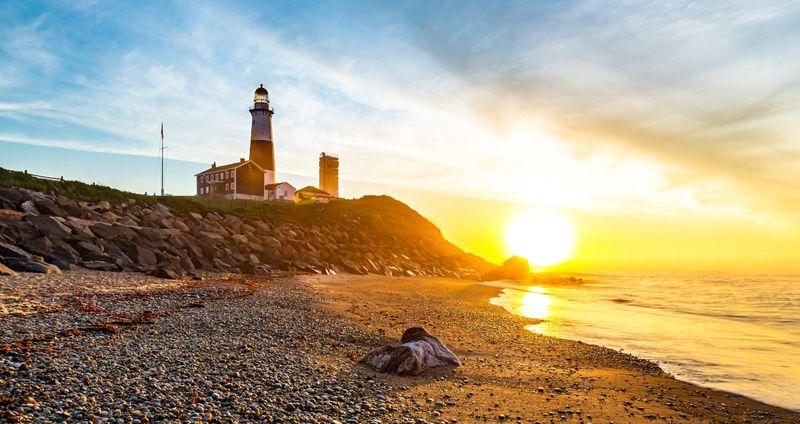
At the easternmost tip of Long Island sits Montauk, the un-Hampton among the Hamptons. Though increasingly discovered by city dwellers, this former fishing village maintains its rugged character with dramatic bluffs and six state parks.
Gurney’s Resort sits perched on a cliff where Atlantic waves crash directly below guest rooms. The Montauk Lighthouse, commissioned by George Washington in 1796, provides both historical significance and Instagram-worthy backdrops.
Commercial fishing remains vital here – Montauk Harbor lands more fish than any port in New York State. Unlike its glitzier Hampton neighbors, Montauk embraces a surf culture and outdoor lifestyle where sandy feet are welcome in local restaurants serving just-caught tuna and lobster rolls worth the long drive from Manhattan.
14. Chincoteague Island, Virginia
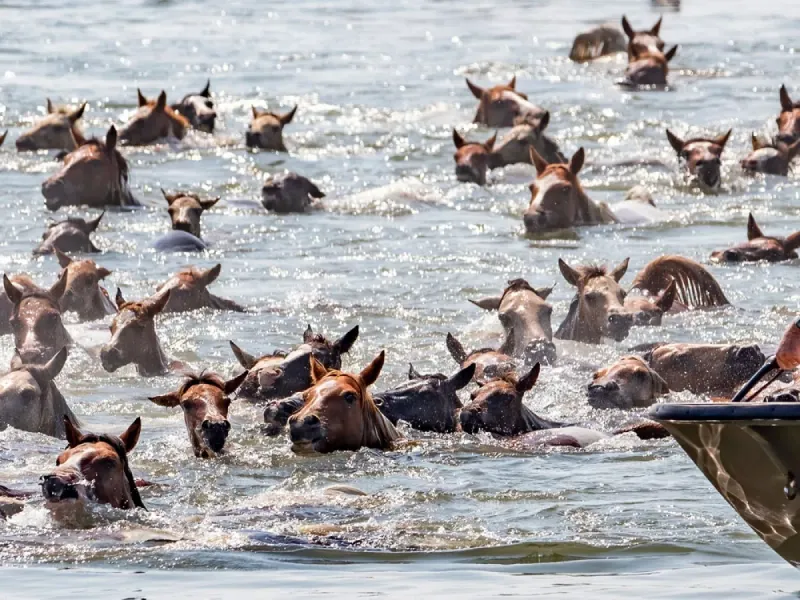
Wild ponies roam freely on neighboring Assateague Island, making Chincoteague famous through the children’s novel “Misty of Chincoteague.” Each July, saltwater cowboys swim the ponies across the channel during “Pony Penning Day,” a tradition since 1925.
Uncrowded beaches within the Chincoteague National Wildlife Refuge provide sanctuary for over 320 bird species. The town itself charms visitors with ice cream shops, local seafood restaurants, and absolutely no high-rise buildings or chain stores.
Oyster farms dot the surrounding waters, supplying briny Chincoteague Salts to restaurants up and down the East Coast. Unlike Ocean City just 30 miles north, this island maintains its natural setting and slow pace, with bicycle being the preferred transportation method around the 7-mile-long island.
15. Manzanita, Oregon Escape
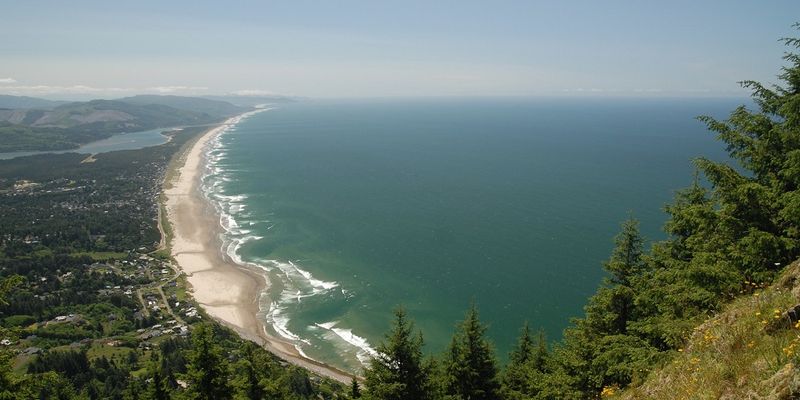
Neahkahnie Mountain rises dramatically from the sea at Manzanita, creating a sheltered beach town that feels worlds away from more developed Oregon coast destinations. The seven-mile beach rarely feels crowded, even during summer months when fog often rolls in by afternoon.
Local shops line the main street where you won’t find a single chain store or restaurant. Nearby Oswald West State Park offers stunning hiking trails through old-growth forest leading to secluded beaches.
Winter storm watching has become a popular activity, with vacation rentals featuring large windows overlooking the powerful Pacific. Though just 20 minutes from more touristy Cannon Beach, Manzanita maintains its quiet charm with strict building codes preserving the small-town atmosphere and natural beauty that draws repeat visitors year after year.
16. Dauphin Island, Alabama

This barrier island sits like a pearl in the Gulf of Mexico, connected to mainland Alabama by a three-mile bridge. The Audubon Bird Sanctuary covers 164 acres with nature trails through maritime forests where over 420 bird species have been documented during spring and fall migrations.
Fort Gaines, built in 1821, witnessed the famous Civil War Battle of Mobile Bay where Admiral Farragut declared, “Damn the torpedoes, full speed ahead!” West End Beach stretches for miles with powdery white sand and clear emerald waters.
Unlike Gulf Shores to the east, Dauphin Island prohibits high-rise developments, maintaining a family-friendly atmosphere where most accommodations are private homes rather than hotels. The Estuarium at the Dauphin Island Sea Lab showcases the four key habitats of coastal Alabama with touch tanks and educational exhibits.
17. Vero Beach, Florida
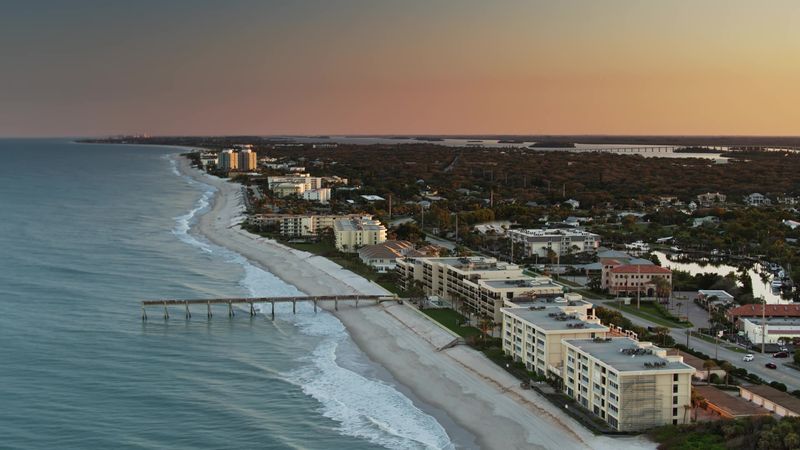
Midway down Florida’s east coast lies Vero Beach, a refined yet unpretentious alternative to Miami or Palm Beach. Strict building height restrictions maintain the town’s village feel, with no structures taller than four stories blocking ocean views.
The Environmental Learning Center on Wabasso Island offers guided kayak tours through mangrove tunnels where manatees often make appearances. Downtown’s Ocean Drive features locally-owned boutiques and restaurants with surprisingly sophisticated dining options for a small beach town.
McKee Botanical Garden preserves 18 acres of native plants and historic structures from Florida’s early tourism era. Unlike much of Florida’s coastline, Vero Beach has preserved significant green space between developments, earning it the nickname “The Gateway to the Tropics” for its unique position where temperate and tropical plant zones meet.
18. Grand Haven, Michigan
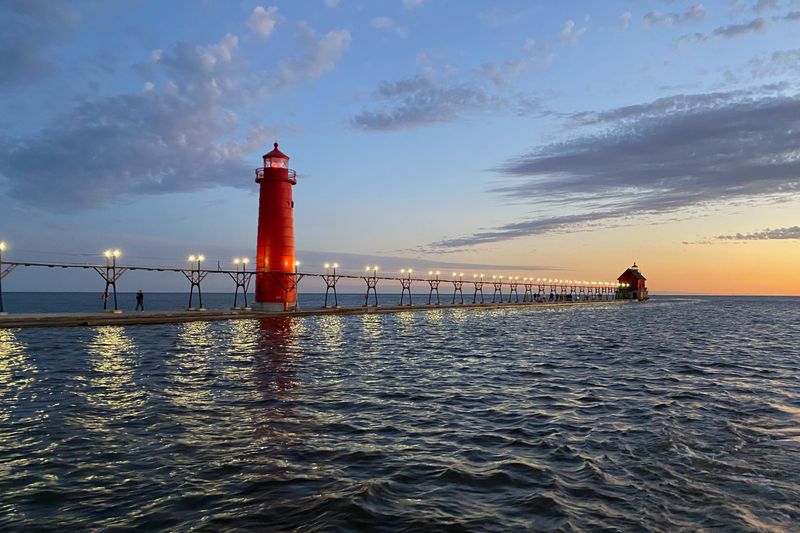
Lake Michigan creates ocean-like beaches without the salt at Grand Haven, where the iconic red lighthouse and pier draw photographers year-round. The Musical Fountain, operating since 1963, performs synchronized water and light shows set to music on summer evenings.
Downtown buildings dating from the 1800s now house ice cream parlors, brewpubs, and shops selling Michigan-made products. The state park boasts massive sand dunes where visitors climb steep slopes for panoramic lake views.
Winter transforms Grand Haven into a snowglobe-like setting, with ice formations creating natural sculptures along the pier and lighthouse. Unlike busier Michigan beach towns, Grand Haven maintains its working harbor where fishing charters and the Coast Guard maintain deep connections to the community’s maritime heritage.
19. Rehoboth Beach, Delaware
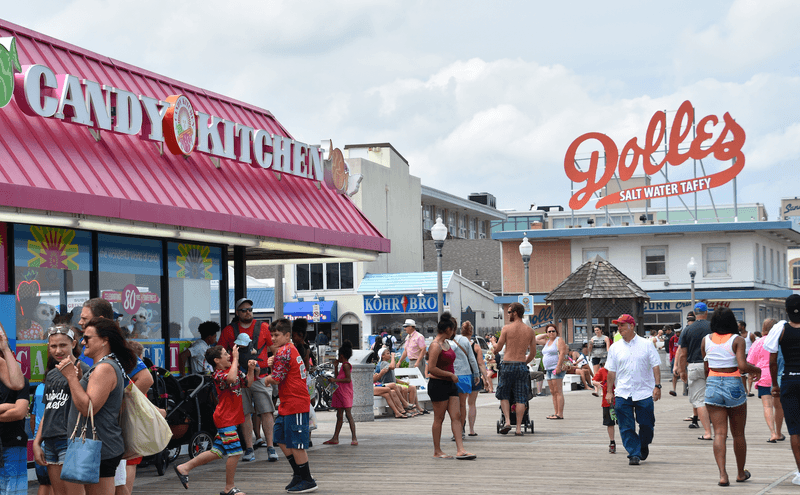
A mile-long boardwalk lined with independent shops and restaurants sets Rehoboth apart from typical beach towns filled with national chains. Founded as a Methodist camp meeting site in 1873, the town evolved into an inclusive beach destination while maintaining strict building codes preserving its small-town character.
Tax-free shopping draws visitors to boutiques and the nearby Tanger Outlets. Dogfish Head Brewery started here as a small brewpub before becoming nationally recognized, and their original location still serves experimental beers found nowhere else.
Cape Henlopen State Park offers pristine beaches where World War II observation towers stand as silent sentinels. Though popular with Washington DC and Philadelphia residents, Rehoboth maintains a distinct personality compared to nearby Ocean City, Maryland, with more sophisticated dining and cultural offerings.
20. Cedar Key, Florida

Time moves differently on Cedar Key, a cluster of islands floating in the Gulf of Mexico where Florida’s Nature Coast remains largely undeveloped. The population hovers around 700 residents, creating a genuine small-town atmosphere where everyone knows each other.
Clam farming replaced fishing as the economic backbone after net bans, now providing 90% of Florida’s farm-raised clams. Historic buildings from the 1800s line the waterfront where working boats outnumber pleasure craft.
The Cedar Key National Wildlife Refuge protects critical habitat for pelicans and other coastal birds. Unlike Florida’s high-rise beach developments, Cedar Key’s tallest buildings stand just two stories high, and the nearest traffic light is 24 miles away, preserving the Old Florida atmosphere that has disappeared from much of the state.
21. Southport, North Carolina
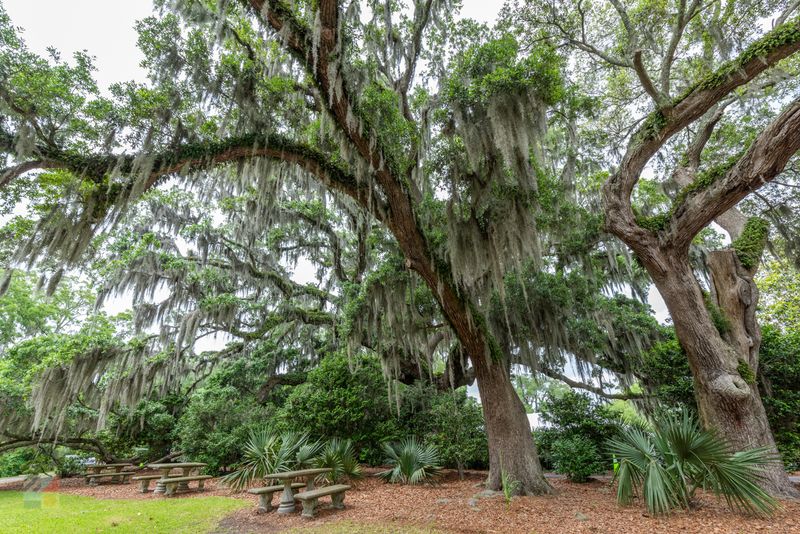
Maritime oaks draped with Spanish moss line the streets of Southport, creating a scene so picturesque that Hollywood regularly films here. The waterfront fishing village where the Cape Fear River meets the Intracoastal Waterway has appeared in dozens of movies and TV shows including “Safe Haven” and “Dawson’s Creek.”
Locals gather at the waterfront to watch massive container ships navigate the river channel toward Wilmington. The Fourth of July celebration here ranks among America’s most impressive small-town patriotic events.
Fresh seafood dominates restaurant menus, often caught that morning by the fishing fleet that still operates from the harbor. Unlike nearby beach towns with high-rise developments, Southport maintains its historic character with well-preserved homes dating to the 1800s and strict building codes ensuring new construction matches the town’s traditional style.
22. Mystic, Connecticut Charm
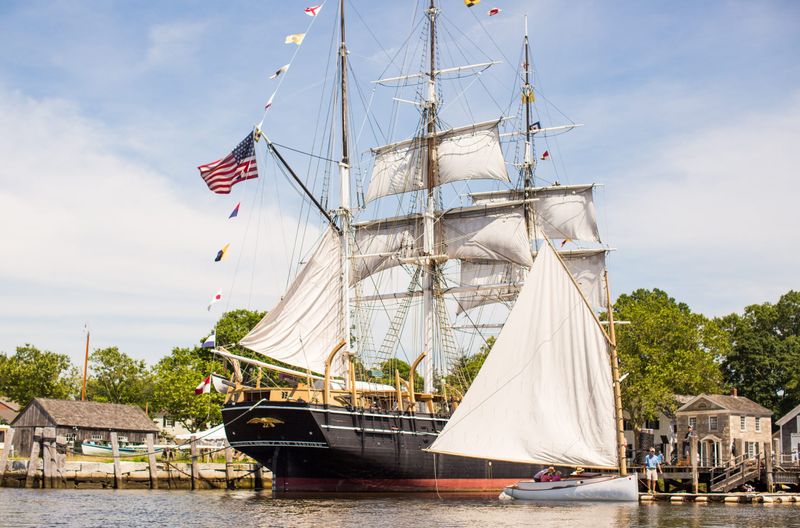
Made famous by the 1988 film “Mystic Pizza,” this former shipbuilding village offers much more than just movie nostalgia. The Mystic Seaport Museum creates a living history experience with the world’s largest collection of historic vessels, including the last wooden whaleship in existence.
Drawbridges open hourly during summer, stopping traffic as sailboats parade through the Mystic River. The downtown district features independent bookstores, ice cream shops, and seafood restaurants serving the region’s famous oysters.
Mystic Aquarium’s beluga whale exhibits draw families, while adults appreciate the maritime heritage preserved in well-maintained captain’s homes. Though technically not directly on the ocean, Mystic’s deep maritime connections and nearby beaches at Napatree Point and Watch Hill provide the quintessential New England coastal experience without the crowds of more famous destinations.
23. Avila Beach, California
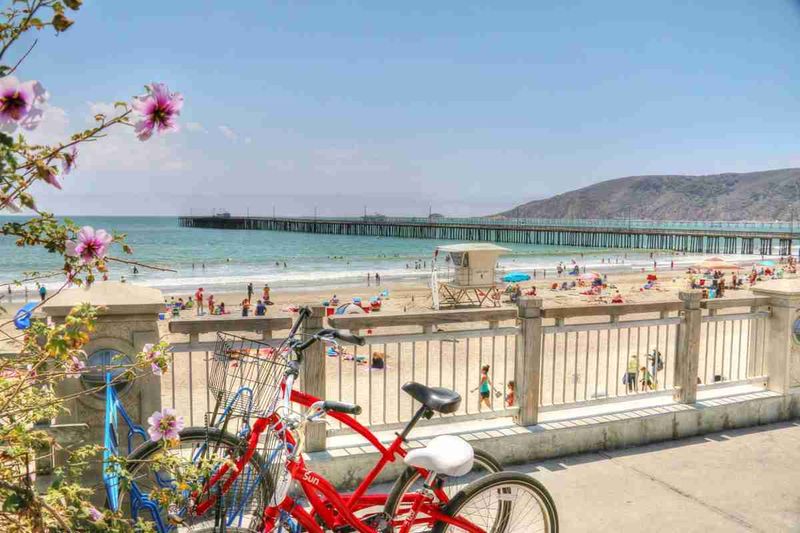
Tucked into a south-facing cove that shields it from Central Coast winds, Avila Beach enjoys a microclimate significantly warmer than neighboring beaches. The town completely rebuilt itself after an oil spill in the 1990s, creating a charming beachfront promenade with restaurants and shops just steps from the sand.
Natural hot springs feed several spas where visitors soak in mineral-rich waters. Nearby Harford Pier allows visitors to drive directly onto the structure where sea lions lounge on crossbeams below while fishermen sell fresh catch directly from their boats.
Unlike more famous Pismo Beach just minutes away, Avila maintains a relaxed atmosphere with significantly smaller crowds. The Bob Jones Trail offers a scenic path for bikers and walkers through a creek-side forest leading directly to the beach, making this one of California’s most accessible coastal experiences.
24. Port Townsend, Washington
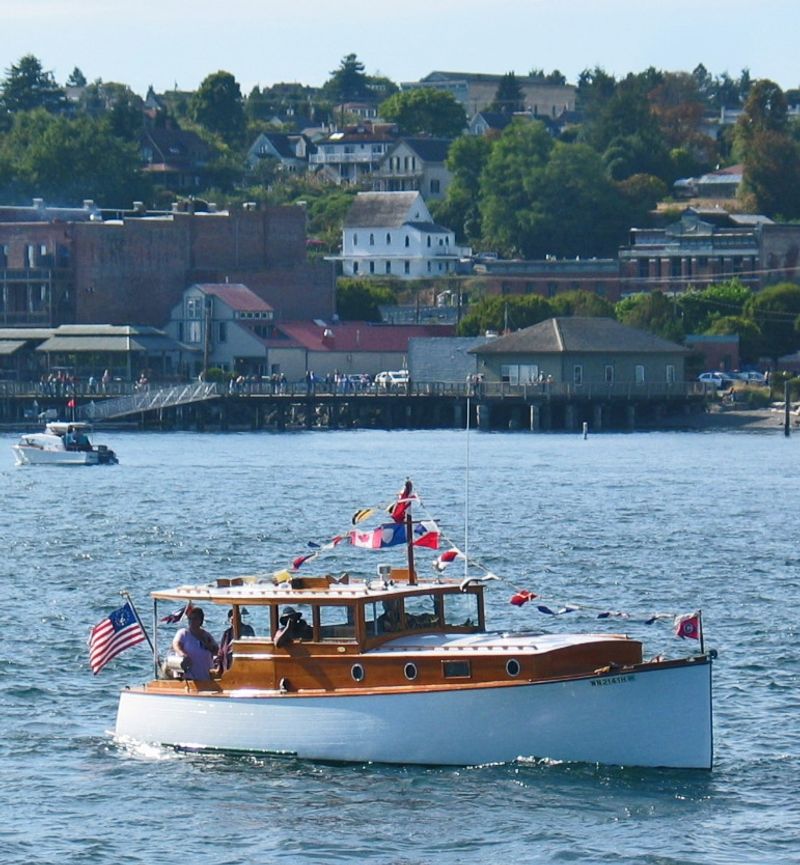
Victorian architecture dominates Port Townsend, a former seaport once predicted to become the “New York of the West.” When railroads bypassed the town in the 1890s, development froze, accidentally preserving one of America’s finest collections of Victorian buildings now housing art galleries, farm-to-table restaurants, and boutique hotels.
Fort Worden State Park offers beaches, hiking trails, and abandoned military bunkers to explore. The town sits at the northeastern tip of the Olympic Peninsula where orcas and gray whales regularly pass through the Strait of Juan de Fuca.
Wooden boat building thrives here, with the annual Wooden Boat Festival drawing craftspeople from around the world. Unlike heavily developed Seattle-area beaches, Port Townsend maintains its artistic community spirit and connection to maritime traditions, with working boatyards operating alongside kayak rental shops and seafood restaurants.
25. Fernandina Beach, Florida
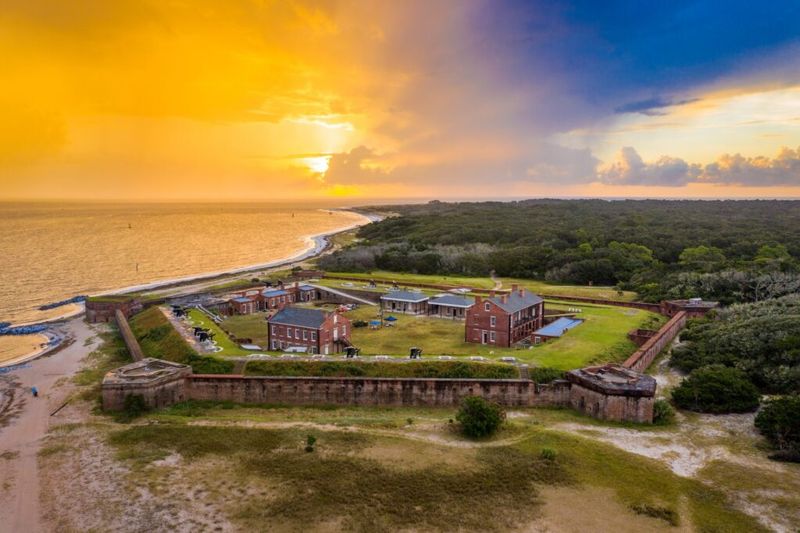
Pirates, Gilded Age millionaires, and shrimping families have all left their mark on Fernandina Beach, located on Amelia Island at Florida’s northeastern corner. The 50-block downtown district features buildings dating from the late 1800s when this was a bustling Victorian seaport.
Fort Clinch State Park preserves a pre-Civil War fortress where costumed interpreters demonstrate 1864 military life. The annual Isle of Eight Flags Shrimp Festival celebrates the town’s claim as birthplace of the modern shrimping industry.
Wild horses roam freely on neighboring Cumberland Island, visible across the sound. Unlike Florida’s heavily developed Atlantic coast beaches further south, Fernandina Beach maintains its Old Florida charm with locally-owned bed and breakfasts in historic homes, shrimp boats still working from the harbor, and 13 miles of uncrowded beaches where shark teeth and shells wash ashore daily.
